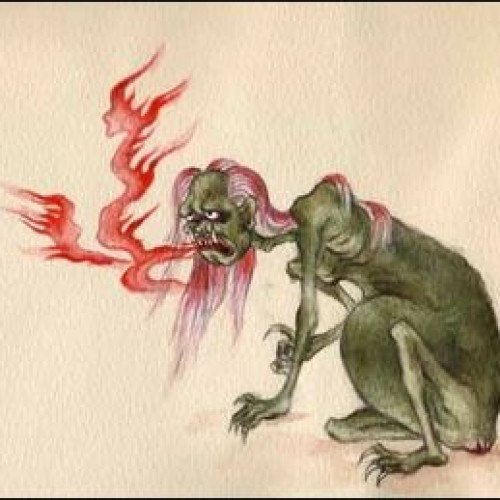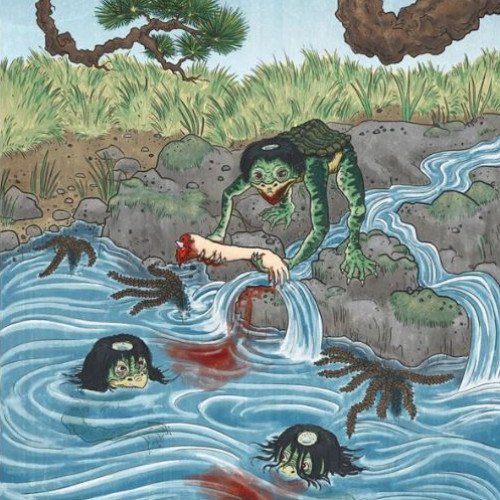Vote on Mythical creatures: Preta vs Kappa (folklore)

Preta
Preta (Sanskrit: प्रेत, Standard Tibetan: ཡི་དྭགས་ yi dags), also known as hungry ghost, is the Sanskrit name for a type of supernatural being described in Hinduism, Buddhism, Taoism, and Chinese and Vietnamese folk religion as undergoing suffering greater than that of humans, particularly an extreme level of hunger and thirst. They have their origins in Indian religions and have been adopted into East Asian religions via the spread of Buddhism. Preta is often translated into English as "hungry ghost" from the Chinese and Vietnamese adaptations. In early sources such as the Petavatthu, they are much more varied. The descriptions below apply mainly in this narrower context. The development of the concept of the preta started with just thinking that it was the soul and ghost of a person once they died, but later the concept developed into a transient state between death and obtaining karmic reincarnation in accordance with the person's fate. In order to pass into the cycle of karmic reincarnation, the deceased's family must engage in a variety of rituals and offerings to guide the suffering spirit into its next life. If the family does not engage in these funerary rites, which last for one year, the soul could remain suffering as a preta for the rest of eternity.Pretas are believed to have been false, corrupted, compulsive, deceitful, jealous or greedy people in a previous life. As a result of their karma, they are afflicted with an insatiable hunger for a particular substance or object. Traditionally, this is something repugnant or humiliating, such as cadavers or feces, though in more recent stories, it can be anything, however bizarre. In addition to having insatiable hunger for an aversive item, pretas are said to have disturbing visions. Pretas and human beings occupy the same physical space and while humans looking at a river would see clear water, pretas see the same river flowing with an aversive substance, common examples of such visions include pus and filth.Through the belief and influence of Hinduism and Buddhism in much of Asia, preta figure prominently in the cultures of India, Sri Lanka, China, Japan, Korea, Vietnam, Tibet, Thailand, Cambodia, Laos and Myanmar.
Statistics for this Xoptio

Kappa (folklore)
A kappa (河童, river-child)—also known as kawatarō (川太郎, "river-boy"), komahiki (駒引, horse-puller), kawatora (川虎, river-tiger) or suiko (水虎, water-tiger)–is an amphibious yōkai demon or imp found in traditional Japanese folklore. They are typically depicted as green, human-like beings with webbed hands and feet and a turtle-like carapace on their backs. A depression on its head, called its "dish" (sara), retains water, and if this is damaged or its liquid is lost (either through spilling or drying up), the kappa is severely weakened. The kappa are known to favor cucumbers and love to engage in sumo wrestling. They are often accused of assaulting humans in water and removing a mythical organ called the shirikodama from their victim's anus.